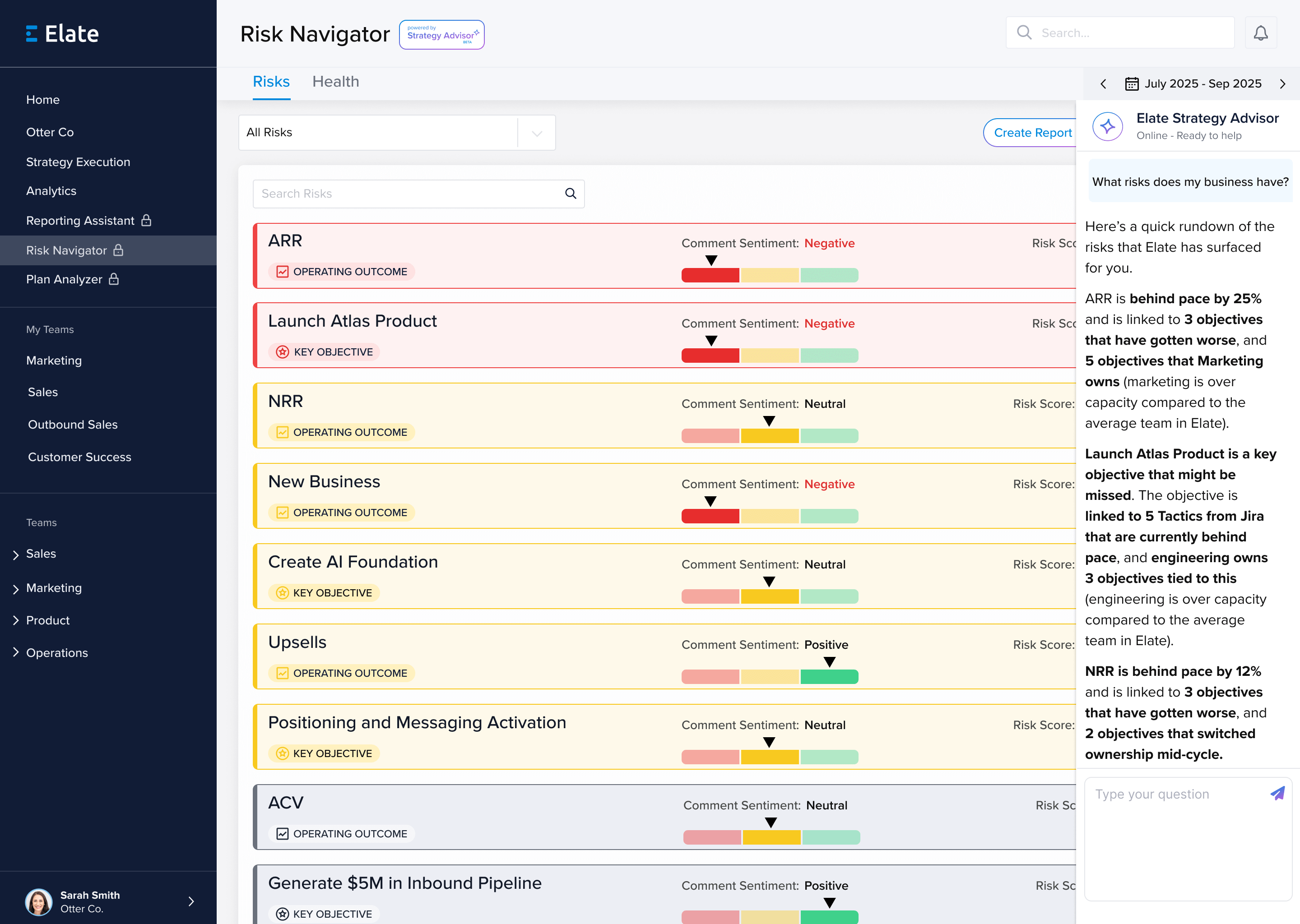In order for your business to be successful today, you need to understand the metrics that define success. That is where OKRs can be helpful. OKR stands for objectives and key results. These are the metrics that are going to define your company's success. Since OKRs or first implemented, they have spread throughout multiple Industries. Today, there are lots of companies that rely on them in order to help employees, managers, and business partners meet their goals.
When it comes to an OKR meaning, OKR goals first started with Google. One of the leading technology companies today, the Google OKR framework was implemented during the first year of the company's existence, back in 1999. At the time, Google only had 40 employees. Now, Google has grown to more than 60,000. Because Google had so much success using OKRs, numerous other companies use this framework as well. Some top examples include Twitter, LinkedIn, and Spotify. Because this system has been so successful, it has expanded outside the tech industry and is employed by numerous other corporate Giants including Walmart, Target, and even some banks.
When using OKRs, the goal is to reassess them on a regular basis. That way, companies can see if they are meeting their targets. This should be done relatively quickly so that problems can be spotted and rectify before they spread to other areas of the company. Furthermore, this also allows employees to see if they are reaching their goals. If you would like to learn everything you need to know about OKRs, check out some helpful information below.
OKR Framework
If you are looking to develop an OKR framework for your company, it is helpful to take a look at others who have already implemented this project successfully. For example, you may want to start with a book called Measure What Matters, which can act as a source of inspiration for your own OKR template.
A lot of people believed OKRs and KPIs are the same things. Even though they are similar, they are not exactly identical. When comparing OKRs vs KPIs, it is helpful to take a look at several differences. Key performance indicators link to strategic objectives, are always measured against targets, and direct companies and organizations where to focus their resources. In contrast, OKRs are always quantifiable, can be scored objectively, have a defined timeline, and are always ambitious. Add a summary, OKRs provide a strategic framework. In contrast, KPIs are measurements that exist within that framework. It is possible to have both at the same time. You may want to use both OKRs and KPIs to make sure you are meeting your goals.
Ultimately, if you are looking to encourage others to adopt the OKR framework throughout your company, it might be helpful to create a template first. Then, spread this to every employee and manager when you are creating your own OKRs. When they see just how helpful this template can be, they will adopt their own OKRs, creating a level of consistency throughout the organization.
Introduction To OKRs
As an introduction to OKRs, it is helpful to take a closer look at the OKR methodology. When it comes to OKRs explained, it might be helpful to take a look at a few examples of OKRs. For example, one objective you might want to have is to become the market leader in your industry. How are you going to get there? That is where you are going to list the key result that will help you accomplish your goals. For example, you might have to double your staff, increase your market cap to enter the S&P 500, or reach a certain revenue target. All of these are key results that will help you reach your objective.
You might also want to take a closer look at some of the original OKRs that Google used in order to become the leader and its own industry. For example, Google also had an objective to become the leader in its own industry. In order to do so, it knew that it would have to increase its staff from 40 employees to the thousands that work there today. This was only one of the many key results that Google followed in order to achieve its objectives. Now, its methodology has spread to other industries as well.
OKR Training
In order for you to successfully implement OKRs and your organization, you have to provide an OKRs overview to your employees. As part of the OKR training program, you have to implement an OKR tutorial. One of the first things you should do is share an OKR goal template with your employees. That way, your employees actually know where to put their objectives and key results.
Then, during the training program, you should provide your employees with several examples. Objectives and key results can be applied on just about any level. For example, you may want to share some management-level OKRs with your employees. That way, they can see what the finished project looks like. Then, encourage him to think of a few objectives that might be helpful in their jobs. Ask them what key results will define whether they are meeting their objectives. That can help them right down their first OKRs.
It might be helpful to go through a few common mistakes that people make when they are trying to set their OKRs as well. For example, one of the most common mistakes that people make when they are developing the key results section is not creating results that are quantifiable. If the results are not quantifiable, it will be impossible for people to know whether they have actually met those results. Make sure your employees use results that are quantifiable.
Company OKR Examples
It might also be helpful to take a look at a few real OKR examples. There are numerous company OKR examples that can serve as a model.
For example, one perfume franchise had a goal to open more than 100 stores across the country. The two objectives were to increase the number of stores by 20 percent and to increase profit by 10 percent. Some of the key results they included were:
- Select candidates for 40 new franchises by the end of March
- Trained 30 of these individuals before the end of June
- Signed contracts with 25 of them before September
- Open 20 new stores before December
A technology company had another objective to implement a reverse auction registration system. The ultimate goal was to save 10 percent on its purchases. Some of the key result it would have to achieve included:
- Develop a new system before the end of March
- Test and integrate the new system before the end of April
- Launch the entire reverse auction system before the end of June
Make sure to refer to these key objectives examples when you are trying to implement OKRs in your own company. That way, you can set your company, your employees, and your business partners up for success in the future.
Benefits of OKRs
When it comes to strategic OKRs, there are a number of benefits the following this system. For example, OKR software is incredibly versatile. Of course, objectives and key results can be used at the level of the entire company. On the other hand, there are also personal OKRs that people can sit at work. For example, employees might set an objective to meet all of their deadlines by the end of the week. Then, they would have to figure out what key results they would need to achieve in order to meet their objective.
In order to maximize the benefits of OKRs, it is important to be strategic when doing so. It is easy for employees to get lost in OKRs and set objectives and key results for just about anything. Instead, it is important to pick them carefully, be strategic, and choose objectives that are actually going to make a difference in their overall performance. In order to get the most out of an OKR system, it can be helpful to use OKR software such as Elate. This can make it significantly easier for people to pick the right objectives, track their key results, and make sure they are meeting their goals.
Who Uses OKRs
So, who actually uses OKRs? The answer is everyone. There are plenty of OKR examples for software engineers. For example, software engineers might have an example to finish a new software system by the end of June. Then, they would set the individual results they would have to achieve in order to get there.
There are even OKR examples for customer service. For example, customer service agents might aim to reduce the average call length by approximately 1 minute. Then, they would have to set key results in order to get there. For example, they might have to reduce the number of calls that are escalated to higher levels by a certain percentage.
There are also OKR examples for technology. As an example, the technology department might save to reduce the average response time on a help desk ticket by ten minutes. Then, they might have to hire new IT professionals, upgrade their software by the end of the month, or add more phone lines.
Finally, there are even OKR examples marketing. For example, the marketing department might seek to increase its organic traffic by 50 percent. Then, they might have to set key results related to their content, rankings, and related keywords. Take advantage of OKRs in your business.











